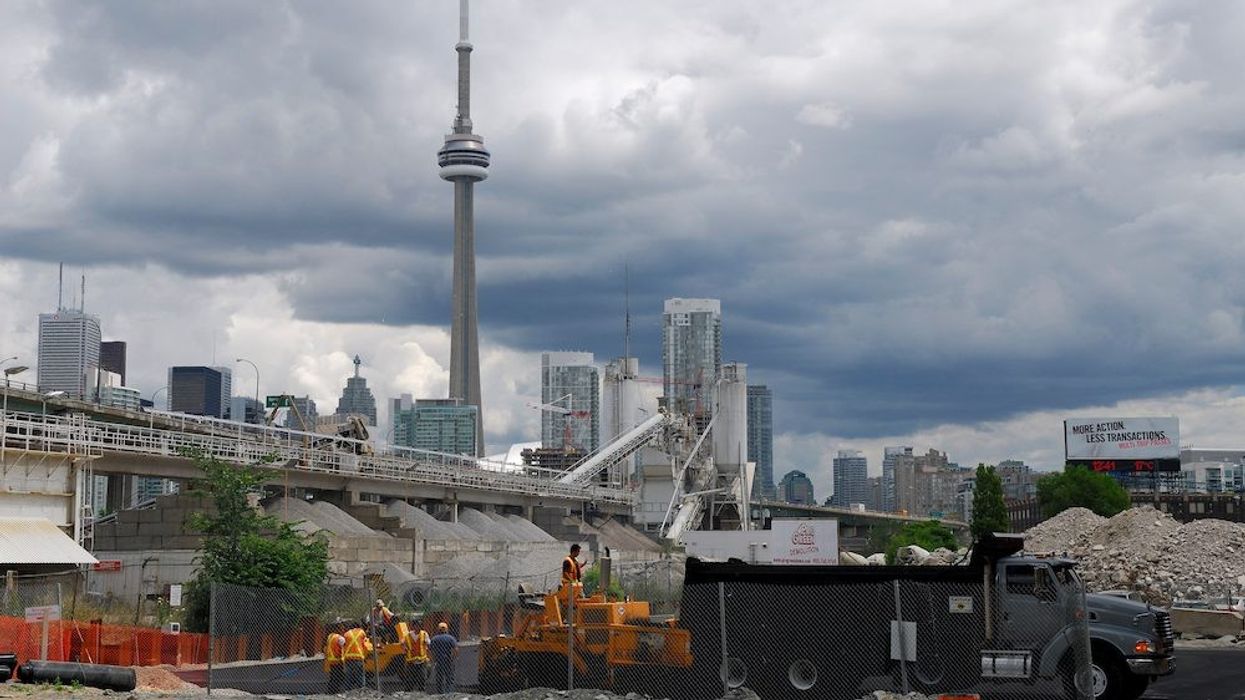Until a week or two ago, the east side of Spadina between D’Arcy and St. Andrew streets, was home to a nondescript one-storey building that for decades housed a number of small shops and restaurant of the sort that give Chinatown its unique character.
Then, suddenly, in the space of, perhaps, 48 hours, it was reduced to a pile of rubble and carted away. The reason, of course, was to clear the way for a condo tower. Though architectural aficionados won’t shed any tears at the vanishing act, it was yet another painful reminder of why loving Toronto has grown so difficult. The city doesn’t love us back. The housing will be welcome, but why does it always seem to come at the cost of urban displacement?
The speed of change has reached the point where whole blocks can become an empty wasteland, terra incognita, overnight. The city feels like a money-making operation run at the whim of an industry drunk on profit. Aided and abetted by local planners and Queen’s Park, everyday buildings as well as important cultural institutions and whole ecosystems are up for grabs.
It leaves locals not just dazed and confused but angry, untethered and increasingly alienated. Except for the obvious landmarks – Union Station, City Hall, CN Tower – everything seems unnervingly temporary. Don’t get too comfortable in your hood, home or habits, all could disappear at a moment’s notice.
Once vibrant neighbourhoods -- think of Yorkville, Queen Street West, King Street East, Liberty Village, the Distillery District -- are buried beneath layers of generic urban renewal and anonymous redevelopment. It’s getting harder to tell one part of the city from another.
Ironically, this wholesale levelling of Toronto has been conducted largely under cover of a housing crisis on which it will have virtually no impact.
To make matters worse, constant construction, transit delays, service interruptions and temporary closures have turned the city into an obstacle course, dangerous, tiresome, slow and frustrating. This, not cultural shift, is what accounts for the continued popularity of remote work. It also helps explain why the post-COVID recovery of downtown Toronto lags behind many North American cities. Getting around in the Toronto and the larger Greater Toronto and Hamilton Area has never been more onerous. The average commute clocks in at 56 minutes one-way, among the worst on the continent.
And the public transit that one day will improve mobility has caused years of disruption. The intersection of Yonge and Eglinton, for example, has been a construction site for 12 years, more than twice as long as it took to build the transcontinental railway.
Though we desire growth, the price we pay is a growing gap between the city and its residents. This disconnection has reached existential proportions; more Torontonians than ever no longer feel they belong in the city, or that the city belongs to them. Increasingly it is a place we move through, but don’t – can’t -- fully inhabit. We just want to get home and close the door. We’d rather order in than go out. Even movie theatres are seeing a decline in attendance. It’s easier to watch movies on Netflix.
At the same time, Ford’s unseemly rush to privatize the public realm is alarming. Look no further than Ontario Place, the Ontario Science Centre and the Green Belt. Adding insult to injury were reports that former mayor John Tory’s grand projet, the proposed 21-acre Rail Deck Park, will instead become the site of nine condo towers.
The collateral shabbiness signals a growing indifference from all levels of government. Twelve years of deferred maintenance under mayors Ford and Tory have left Toronto, the famously “livable city,” less so than ever.
The fact that fewer and fewer families can afford to live here is another barrier to our relationship with the city.
And let’s not forget tenants; they are especially vulnerable as rents have gone through the roof.
Even the language has evolved along with the city. We talk routinely now about renoviction, monetization, multiplexes and façadomy, words that reflect our preoccupation with real estate and urban change.
The cheap rents that allowed innovation and culture to thrive have vanished. Indeed, the very idea of an art scene now feels quaint. Even the health of small retail operations that function as neighbourhood anchors and meeting places is threatened as franchises, chains and branch plants proliferate.
Still, there are reasons for optimism. The newfound popularity of green spaces, street cafes and pedestrianized roads reveal a hunger to restore the city’s lost liveability. With so many confined to 600-square-foot condos high in the clouds, parks are our backyards, restaurants our dining rooms, cafes our living rooms and sidewalks our hallways.
Torontonians are tired of being ignored and pushed out of their city. They want back in. Regaining control won’t be easy. But it can be done. That’s why the current mayoral by-election has become a referendum on who runs the city. For far too long, it hasn’t been us.





















